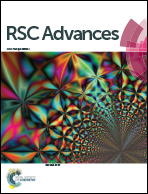Nanoarchitectonics on living cells
Abstract
In this review article, the recent examples of nanoarchitectonics on living cells are briefly explained. Not limited to conventional polymers, functional polymers, biomaterials, nanotubes, nanoparticles (conventional and magnetic ones), various inorganic substances, metal–organic frameworks (MOFs), and other advanced materials have been used as components for nanoarchitectonic decorations for living cells. Despite these artificial processes, the cells can remain active or remain in hibernation without being killed. In most cases, basic functions of the cells are preserved and their resistances against external assaults are much enhanced. The possibilities of nanoarchitectonics on living cells would be high, equal to functional modifications with conventional materials. Living cells can be regarded as highly functionalized objects and have indispensable contributions to future materials nanoarchitectonics.

- This article is part of the themed collection: 2021 Reviews in RSC Advances


 Please wait while we load your content...
Please wait while we load your content...